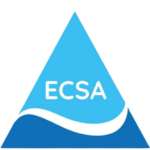Keynote speakers
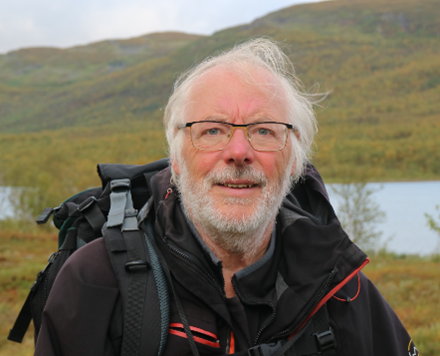
Prof. Dr. Patrick Meire, Emeritus Professor Ecosystem Management at the University of Antwerp. He studied biology at the University of Ghent and started his PhD work at the Laboratory of Animal Ecology, Nature Conservation and Biogeography of the University of Gent. In 1990 he became senior researcher at the Institute of Nature Conservation, a research Institute of the Flemish Government. Since 1995 until 2023 he hold the chair of Integrated Water Management at the Institute of Environmental Studies of the University of Antwerp and since between 1999 and 2023 he was professor at the University of Antwerp, Department of Biology and head of the ecosystem research group. He was also visiting professor at the Warchau University of Life Sciences. He was awarded the Price Rudy Verheyen in 2010, the live time achievement award of the Belgian section of the International Water Association (2017) and a sluice was named after him (“The Meire Sluis”) in the “Polder of Kruibeke” (2017) to honor his groundbreaking work on restoration of the Schelde estuary ecosystem.
His research career focused on the study of environmental impact on aquatic systems and possibilities for restoration. Starting with a study of the impact of the construction of a storm surge barrier in the Oosterschelde on waterbirds and macrozoobenthos, his work extended towards more integrated ecosystem studies. The processes in the land-water interaction along the whole river continuum from source to sea are studied at different scales: from individual organisms, over populations and communities, towards ecosystems and landscapes. These studies, which involve both descriptive and experimental field work, are integrated to make predictions on the impact of different management options on the functioning and biodiversity of the system. The fundamental knowledge is translated into concepts and visions for management and restoration. He has some 200 publications in peer-reviewed journals, edited 3 books and (co-)authored more than 300 scientific reports, papers in national journals etc. for more information please visit https://www.uantwerpen.be/en/staff/patrick-meire/
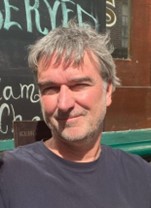
Dr. Koen Sabbe is a professor in the Biology Department at Ghent University. His main research interests lie in aquatic microbial diversity, ecology and evolution, and more specifically understanding the eco-evolutionary processes that generate and regulate biodiversity and community dynamics in pelagic and benthic microbial systems, and how this affects the functioning of these systems. In recent years, microbial interactions (prokaryote-eukaryote, eukaryote-eukaryote) form an important research topic. Study areas include the North Sea and adjoining estuaries (including the Scheldt estuary), Greenlandic fjords, NW European intertidal mudflats, and lake systems around the world.
Dr. Iris Möller holds a Ph.D. in Geography from the University of Cambridge. After a short spell of working at HR Wallingford Ltd, she joined the University of Cambridge’s Coastal Research Unit as a Research Associate and Deputy Director. A Full-Time College Lectureship in Physical Geography at Fitzwilliam College and then a University Lectureship in Physical Geography (Coastal Processes) at the Department of Geography at the University of Cambridge followed. In October 2019 she moved to Trinity College and stepped into the role of Head of Department in January 2020. She is internationally recognised for her work on the buffering function of shallow coastal environments with a strongly applied focus on improving coastal flood and erosion risk management. Her most recent research has focused on bringing together an understanding the bio-physical functioning of coastal ecosystems and landforms with that of the human interaction with such spaces to achieve a more integrated land- and seascape scale approach towards sustainable use of coastal environments.
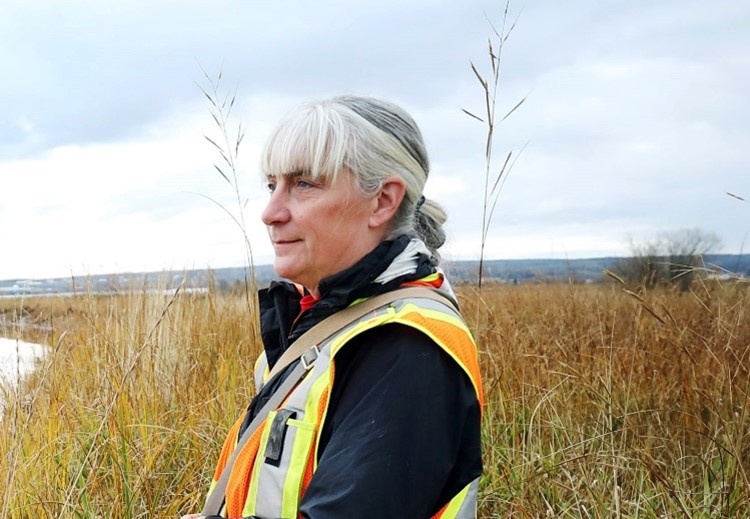
Dr. van Proosdij is a professor at Saint Mary’s University, Fellow of the Royal Canadian Geographical Society and Fellow of the Royal Society of Canada. As a coastal geomorphologist, she merges field studies and geomatics to understand how coastal ecosystems respond to natural and anthropogenic drivers of change, and how these responses can be leveraged to foster ecosystem resilience while assisting communities adapt to climate change. This includes coastal vulnerability assessments and the use of nature-based adaptation approaches to manage flooding and erosion hazards in and outside of Canada. She has served as a scientific advisor for provincial, federal governments, international agencies, and NGOs in assessing coastal erosion and flood risk. In particular, she has played a central role in assessing the vulnerability of provincial dyke infrastructure, providing scientific insights and guidance for dykeland climate change adaptation including managed realignment and saltmarsh restoration.

Prof. Mike Elliott, Emeritus Professor in Estuarine & Coastal Sciences, School of Environmental Sciences, The University of Hull, UK; and Director, International Estuarine & Coastal Specialists Ltd (https://www.iecs.ltd); URL https://www.hull.ac.uk/staff-directory/mike-elliott
Mike is the Director of International Estuarine & Coastal Specialists (IECS) Ltd and also the Emeritus Professor of Estuarine and Coastal Sciences at the University of Hull, UK. He was Director of the former Institute of Estuarine & Coastal Studies (IECS) at the university from 1996-2017. He is a marine biologist with a wide experience and interests and his teaching, research, advisory and consultancy includes estuarine and marine ecology, policy, governance and management. Mike has published widely, co-authoring/co-editing 23 books/proceedings and >400 scientific publications. This includes co-authoring ‘The Estuarine Ecosystem: ecology, threats and management’ (with DS McLusky, OUP, 2004), ‘Ecology of Marine Sediments: science to management’ (with JS Gray, OUP, 2009), and ‘Estuarine Ecohydrology: an introduction’ (with E Wolanski, Elsevier, 2015). He was an editor and contributor to the ‘Coasts and Estuaries: the Future’ (Wolanski, Day, Elliott and Ramachandran; Elsevier, 2019), Fish and Fisheries in Estuaries (Whitfield, Able, Blaber & Elliott; Wiley, 2022) and the Treatise on Estuarine & Coastal Science (1st Ed. Eds.-In-Chief – E Wolanski & DS McLusky, Elsevier; 2nd Ed. D Baird and M Elliott). He has advised on many environmental matters for academia, industry, government and statutory bodies worldwide. Mike is a past-President of the international Estuarine & Coastal Sciences Association (ECSA) and is now Vice-Chair of Future Earth Coasts and a Co-Editor-in-Chief of the international journal Estuarine, Coastal & Shelf Science; he currently is or has had Adjunct Professor and Research positions at Murdoch University (Perth), Klaipeda University (Lithuania), the University of Palermo (Italy), Xiamen University (China) and the South African Institute for Aquatic Biodiversity. He was awarded Laureate of the Honorary Winberg Medal 2014 of the Russian Hydrobiological Academic Society, and was awarded Lifetime Achievement Award of ECSA, September 2022. He is also a member of many national and international committees linking marine science to policy.
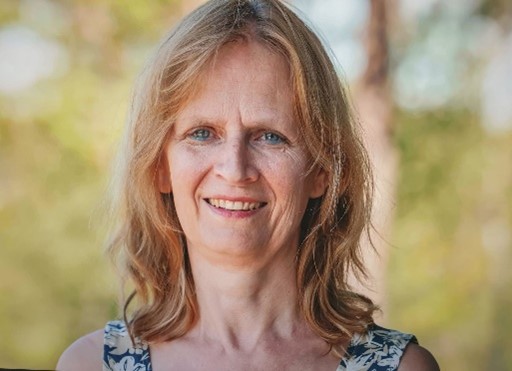
Prof. Dr. An Cliquet is a professor of international and European environmental and biodiversity law at Ghent University (Belgium). Her research covers ecological restoration law, and topics such as EU protected area law and the relationship between climate change and biodiversity. She is a member of the European Environmental Law Forum (EELF) and of the IUCN World Commission on environmental law. She is chair of the Legal Working Group on Restoration from the Society of Ecological Restoration Europe (SERE).
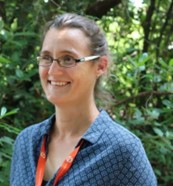
Dr Laure Carassou maintained a PhD in Biological Oceanography in France in 2008. She has been working on fish ecology in coastal and estuarine systems from tropical and temperate regions (including New Caledonia, the northern Gulf of Mexico, South Africa and the Arabian Gulf) for over ten years, before securing a permanent research position at the French National Institute for Agriculture, Food and Environment (INRAE) in Bordeaux in 2016. Her current research consistently focuses on the structure and functioning of fish communities in estuaries, mainly from the perspective of their trophic ecology, which leads to questioning the whys and wherefores of restoration of estuarine habitats. She combines field observations, laboratory approaches and experimental work to assess the benefits of the restoration of estuarine habitats (specifically intertidal marshes) for juvenile marine and diadromous fish and associated functionalities at the scale of the estuarine socio-ecosystem. Laure now tries to integrate these applications of fish community ecology to the larger multidisciplinary framework underlying the rehabilitation actions of estuarine habitats. In this purpose, she co-leads a national scientific network dedicated to ecological restoration at INRAE since 2019, and is involved in several interdisciplinary projets underlying the development of monitoring indicators and guidelines for the restoration of estuarine habitats and populations. This leads her to question notions such as Nature-Based Solutions, reference conditions in restoration ecology or the importance of geographical, social, political or cultural frameworks in shaping restoration success. She has authored 35 papers and 9 books, has served as associate editor for the journal Estuaries and Coasts for a few years, and contributes to several expert commitees advising public stakeholders on matters related to coastal and estuarine ecosystem management in France.
Topics
Estuarine restoration: how to adapt our estuaries to global change? Are nature based solutions the Holy Grail?
Estuaries are among the most productive ecosystems delivering many ecosystem services but have suffered greatly from many anthropogenic pressures. Worldwide many estuaries are now heavily degraded due to habitat loss and pollution. In response many measures were taken to restore these systems. Apart from some exceptions, restoration was mainly driven by legislation. Thanks to environmental legislation emissions from both industries and households were reduced. In Europe the Bird and especially the Habitat directive and in the US the Estuary Restoration Act were a major driver for habitat restoration. Loss of habitat due to human activities such as harbor developments, must be compensated by creating/restoring similar habitat to achieve a net zero loss of habitat. Also the directives require the designed habitats to remain in a good state of conservation which is defined in surface and quality of different habitats and populations of species. This might also require restoration measures. As a consequence since a few decades a large number of restoration projects have been implemented. However the success of all these efforts is not always clear. We still see water quality problems and restored habitats do not always perform as expected. In the meantime further developments such as harbour development, fairway maintenance and especially climate change and sea level rise are likely to further impact our estuaries and challenge all management measures taken.
In this symposium we want to present the results obtained in the Schelde estuary and bring together worldwide experience on estuarine restoration and application of nature based solutions to discuss the scientific, legal and societal challenges of restoring estuaries and developing strategies to adapt our estuaries towards the expected climate change. We focus on the entire estuarine gradient from the upper estuary, the fresh water tidal area via the brackish zone towards the marine part in the lower estuary, extending in the mouth of the estuary.
The following sessions are planned:
| 1) | Restoring the pelagic habitats |
|---|---|
A healthy estuary depends on a good water quality. In the past decades enormous investments were made worldwide in water purification. However still some major water quality issues remain, among them, still low oxygen concentrations, increasing suspended sediment concentrations, a whole series of emergent pollutants etc. This immediately impacts primary productivity and the pelagic ecosystem from phyto- over zooplankton to the fish populations. Also the hydrodynamics are changing in response to changing fresh water discharge, sea level rise and geomorphological changes. In this session we invite papers describing long term trends in water quantity and quality, primary production and pelagic biota (plankton, fish, hyperbenthos,..) emphasizing trajectories of change over time and insights on possible future changes due to global and climate change. Also papers on the interaction between the pelagic habitat and the input of the catchment and the benthic-pelagic coupling are welcomed. | |
| 2) | Restoring intertidal habitats |
The majority of restoration projects involve restoring tidal marshes and different techniques or nature based solutions are used. We invite papers documenting and evaluating the (long term) development of different restoration projects based on either different biota and or abiotic changes (sedimentation rate, sediment characteristics,…). Apart from the structural aspects we specially welcome papers documenting the functioning of these habitats, among others their geochemical functioning (impact on water quality), nursery function, carbon sequestration, primary production,.. Also restoration of benthic communities both inter- as subtidal in relation to improved water quality is an important topic as well as benthic-pelagic coupling. Did the projects deliver the predicted biota, the ecosystem services? What were the critical success/failure factors. How important are ecological engineers? | |
| 3) | How to plan for restoration, define objectives, goals? |
We can derive a lot of understanding from the past but still major knowledge gaps exist on planning the further restoration of estuaries. First of all how do we define the goals we want to achieve. Some are fixed in environmental legislation (water quality parameters, some biota,..), but many more need to be specified. For which parameters we should formulate goals (drivers of the system)? This can be among others primary production, nutrient ratio’s, an amount of different ecosystem services,… How these objectives should be defined and how can we translate the objectives into an coherent plan delivering the objectives. What is the surface of different habitats needed to deliver the requested goals? What is the optimal combination and spatial configuration of different projects to deliver the requested goals? What are the possibilities and limitations of modelling to estimate the impact of different scenario’s? How can we upscale from individual restoration projects to an estuary wide plan? Can we move from a pattern based to a process based restoration? | |
| 4) | Dynamic ecosystems versus static regulation |
Environmental legislation is essential as a legal basis for restoring our estuaries. However a conflict may arise between the dynamics of the estuarine ecosystem due to continuous geomorphological changes leading to changes in habitat distribution and the fixed conservation objectives. In this session we want to explore the possibilities to reconcile the inherent dynamic nature of estuaries with more stringent regulation. | |
| 5) | Evaluation and monitoring |
Monitoring is of crucial importance to document the changes in our estuaries however, unfortunately very often monitoring programs are reduced to budget reasons and restricted to what is required by legislation. A more holistic approach is needed and we welcome contributions on the set up of monitoring programs, including the possibilities of recent technological developments. Monitoring is one thing, analyzing the large data sets (especially from continuous measurements) and evaluating the results is another thing. How do we evaluate certain trends? When should the deviation of a parameter from some preset value trigger action? How do we combine the evaluation of the many measured parameters into an overall evaluation. Is the approach of the Water Frame Work directive, one out all out a useful approach? This and many related questions can be discussed in this session. |
Overall, we encourage papers to include where possible (not limitative) restoration techniques (different types of nature based solutions); quantification of ecosystem services (carbon sequestration, nursery function, storm flood protection,..); microbial communities; invasive species; new technologies, ideas of the way ahead, both concerning legislation, management,….

